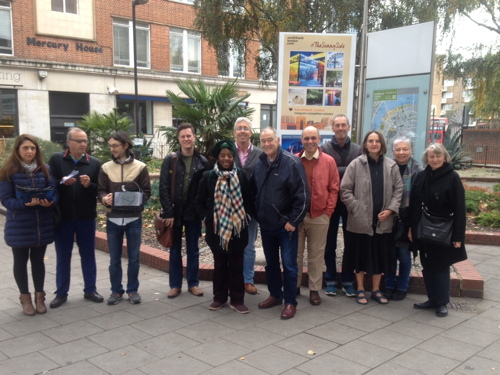Residents join forces to measure air quality in Waterloo
Waterloo residents and King's College London have collaborated on an experiment to test pollution levels on streets in Waterloo.

They found that back streets just 20 metres from Waterloo Road had 50 per cent lower pollution levels, adding weight to the suggestion that pedestrians should seek out walking routes away from heavily trafficked streets.
South Bank & Waterloo Neighbours – the group compiling a neighbourhood plan for the area – has been working with King's College to gather evidence which will put pressure on Lambeth Council to invest in infrastructure to encourage walking through less polluted back streets such as Cornwall Road and Hatfields.
The South Bank and Waterloo Neighbourhood Plan will call for back streets to be designed for this purpose, with more trees, places to rest and a building designed to absorb ambient noise.
SoWN is also calling for permanent air quality monitoring equipment to be installed in Waterloo.
"After the VW emissions scandal, the interest of Londoners in how air pollution affects them reached new levels of intensity," said Andrew Grieve, of the King's College Air Quality Monitoring Unit.
"Citizen-run experiments like this demonstrate not only that people want to find out for themselves what's going on, but also that inner London resident communities can change their behaviour to reduce their exposure."
Bishop's ward councillor Kevin Craig said: "I am very proud of these local residents who took the initiative to test their own air, and I will do all I can to ensure that Lambeth takes notice of the clear messages that are coming out of Waterloo that local residents will not rest until they see air pollution brought under safe limits."
Comments
Share
The SE1 website is supported by people like you
More to read
- South Bank art installation highlights city's air quality problem 16 Feb 2023
- Project to bring goods by river to Butler's Wharf wins Govt backing 30 Mar 2022
- Bakerloo line extension: work goes on, says TfL 9 Oct 2020
- DHL launches daily parcel delivery service by boat to Bankside 29 Sep 2020
- Bermondsey Street to be closed to through motor traffic 7 Jul 2020
- London Bridge: dramatic improvement in air quality during lockdown 6 Jul 2020
- Waterloo named as engine idling hotspot as Lambeth imposes fines 12 May 2020
- Silvertown Tunnel campaigners stage 'die-in' outside City Hall 30 Nov 2019
- South Bank & Waterloo neighbourhood plan referendum this week 23 Oct 2019
- Old Kent Road in line for share of Future High Streets fund 10 Jul 2019
Follow us
Email newsletter
For the latest local news and events direct to your inbox every Monday, you need our weekly email newsletter SE1 Direct.

